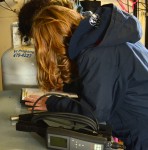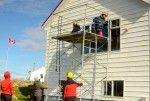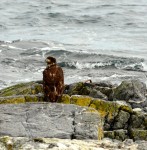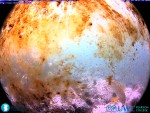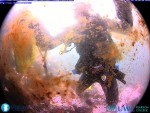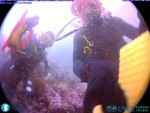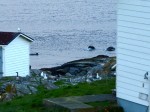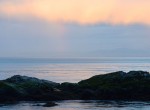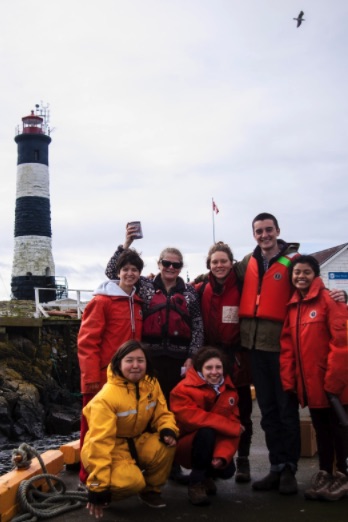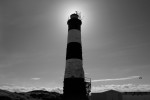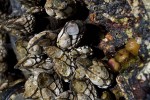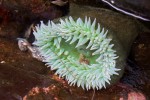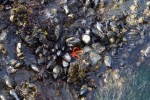Light rain and partially cloudy in the early morning; sunny for the rest of the day
Wind: W 6-27 knots
Air Temperature: Low 8.4°C, High 11.4°C
Ocean Temperature: 8.8°C
The visiting group of students toured the island and helped run the desalinator. In the afternoon they did a leadership initiative of setting up two levels of scaffolding and scrubbing the algae from the west wall of the Marine Science Centre. They did an amazing job of looking out for everyone’s safety and cleaning the walls.
A turkey vulture was seen in the early afternoon hovering by the Eco-Guardian’s house. It flew north towards Bentinck Island. They are rarely seen here at this time of year. Occasionally they pass through in the fall, on their southern migration routes.
There were two eco tour boat seen in the reserve today.
- A juvenile bald eagle takes off from the northeast side of Great Race.
- Roman and Noemi record the sea temperature and salinity at 15:31, one hour before high tide.
- Heather, Catherine, Roman, Noemi and Roger pose by the scaffolding they constructed.
- Scrubbing the algae off the siding on the Marine Science Centre


